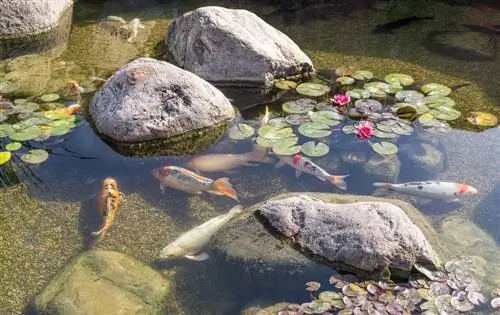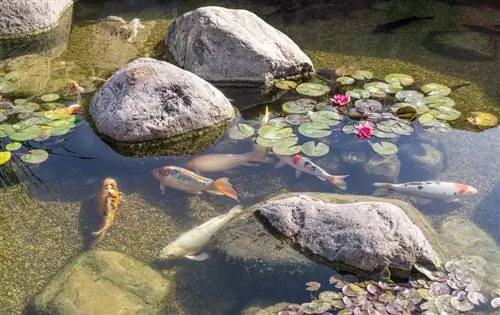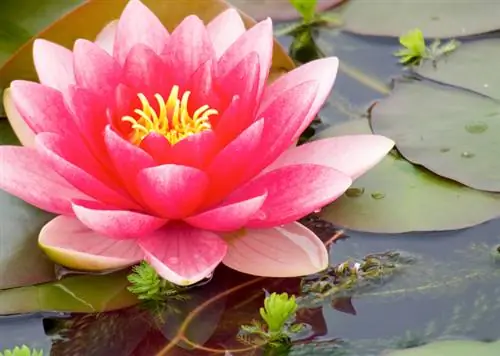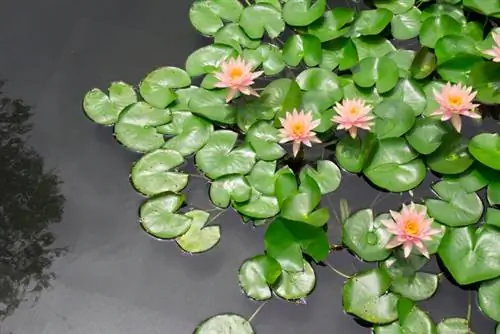- Author admin [email protected].
- Public 2023-12-16 16:46.
- Last modified 2025-01-23 11:22.
If you don't pay any attention to the small body of water in your garden, it will grow more algae and become unsightly from year to year. A clear garden pond, on the other hand, is the attractive highlight of any green area and gives it a very special relaxation factor. If you pay attention to a few points when caring for it, the effort will be limited and you can enjoy a beautiful piece of nature.

How can I ensure clear water in my garden pond?
To keep a garden pond clear, you should choose the right location, remove algae, reduce nutrients, ensure filtering, control water values and remove pollution. An annual basic cleaning also helps.
The right location
Whether algae continue to multiply in leaps and bounds can be influenced by the choice of location. The pond must not be exposed to the sun all day long. The perfect shade for a few hours is a wall. Tall trees are also suitable, but you will have to fish out leaves more often.
Remove algae
So that the floating algae present in the water do not get out of hand, you should fish them off regularly with a landing net (€10.00 on Amazon). As long as you proceed carefully, this mechanical cleaning will not harm the aquatic inhabitants.
Don't add too many nutrients
Algae growth increases dramatically where there is an excess supply of nutrients. Therefore, you should seek advice from a specialist when planting the pond. This ensures that the plants have the optimal conditions and that the plants used actually ensure that the nutrient content drops.
The deposited pond sludge also contains lots of nutrients. It should therefore be vacuumed regularly with a mud vacuum. Then refill with evaporated water, as this also reduces the nutrient concentration.
Sufficient filtering
Standing water can tip over in a very short time. For this reason, good filtering in the garden pond is essential. When inserting the pump, make sure that the water circulation actually reaches all places.
The filter system sucks in the water from the pond, passes it through special filter media and then releases it again. Suspended matter and plant parts are sucked out and broken down by the bacteria living in the filter.
Check water values
You can use the water values to see whether the water quality in the pond is good. It is advisable to check these at least once a week in order to be able to take countermeasures if necessary. The following values can be easily read using the test sticks or test packages available from specialist retailers:
- Carbon hardness,
- Total alkalinity
- Total hardness,
- Chlorine content,
- Nitrates,
- Nitrite,
- pH value.
If these are not in an optimal range, you can temporarily counteract them with a care product. At the same time, however, it is important to eliminate the cause.
Remove pollution
It's not just in autumn that a lot of dead biomass is introduced into the pond by falling leaves and dead parts of the aquatic plants. This begins to rot and the small body of water can tip over.
You can use a leaf catcher net to prevent leaves from ending up in the garden pond. You should fish plant parts regularly throughout the year.
Tip
At least once a year, preferably in spring, you should give the pond a thorough cleaning. Then remove about a third of the old water and replace it with fresh water. Take this opportunity to clean the filter system thoroughly and replace the filter sponges if necessary.






